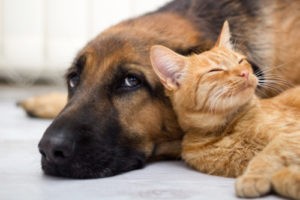You’ve likely heard of people visiting chiropractors to ease pain or tackle health issues, but did you know your pets can benefit too? Animal chiropractic care is growing in popularity, and by 2025, some pet insurance plans even cover it. Much like it helps humans, this drug-free, non-invasive approach can manage pain and address conditions like arthritis or joint injuries in animals. Many pet owners rave about the results, noting that their furry friends not only feel better but actually look forward to their chiropractic visits!
Which Animals Can Benefit from Chiropractic Care?
Virtually any vertebrate species can experience the perks of chiropractic care. Dogs, cats, and horses top the list as the most common patients, but birds and other animals with spines can benefit too.
For years, veterinary chiropractic has been a go-to for performance animals like show horses, racehorses, and barrel racers. It’s a trusted way to ease the physical stress these animals endure in their roles, while also speeding recovery from injuries and keeping pain in check. For household pets like dogs and cats, it’s often used to tackle aging-related issues, arthritis, or injuries—especially when a pet can’t tell you they’re hurting. If your pet seems off, grumpy, or less active, a chiropractic visit (perhaps paired with a vet-approved supplement like CBD oil for pets) could be worth exploring.
Common Conditions Treated with Veterinary Chiropractic
Veterinary chiropractic targets biomechanical and neurological issues, much like its human counterpart. Pets are often treated for conditions such as:
-
Spondylosis
-
Hip dysplasia
-
Degenerative joint diseases
-
Intervertebral disc disease
-
Neck or back pain
-
Cervical instability
It can also help with autonomic nervous system issues, including muscle weakness, urinary or fecal incontinence, and stubborn pain that resists standard treatments. While severe injuries like ligament tears or fractures might need surgery, chiropractic shines post-recovery—easing pain and correcting compensatory habits that arise from favoring an injury. For working animals, regular adjustments can maintain flexibility and range of motion, helping prevent injuries before they start.
How Does Veterinary Chiropractic Work?
Chiropractic focuses on keeping the spine and joints in their natural alignment. The nerves around these areas link to the central nervous system, which connects to every organ, including the brain. Even a slight misalignment can disrupt this communication, leading to muscle or joint pain, organ dysfunction, or a dip in overall health. When the spine’s out of whack, the body can’t perform at its best. Adjustments restore alignment, helping everything run smoothly again.
Setting Your Pet Up for Chiropractic Success
To make the most of your pet’s chiropractic visit, come prepared with their full backstory: vaccination records, health history, current conditions, diet (including supplements), medications, and daily routine. If an injury’s involved, share how it happened if you know.
After the adjustment, ask questions if anything’s unclear—whether it’s about at-home exercises, follow-up care, or lifestyle tweaks like adjusting a saddle, collar, or exercise plan. Dr. Jess might suggest changes to support your pet’s recovery or long-term health. Your pet relies on you to make these calls, so stay proactive—they’re counting on you!
